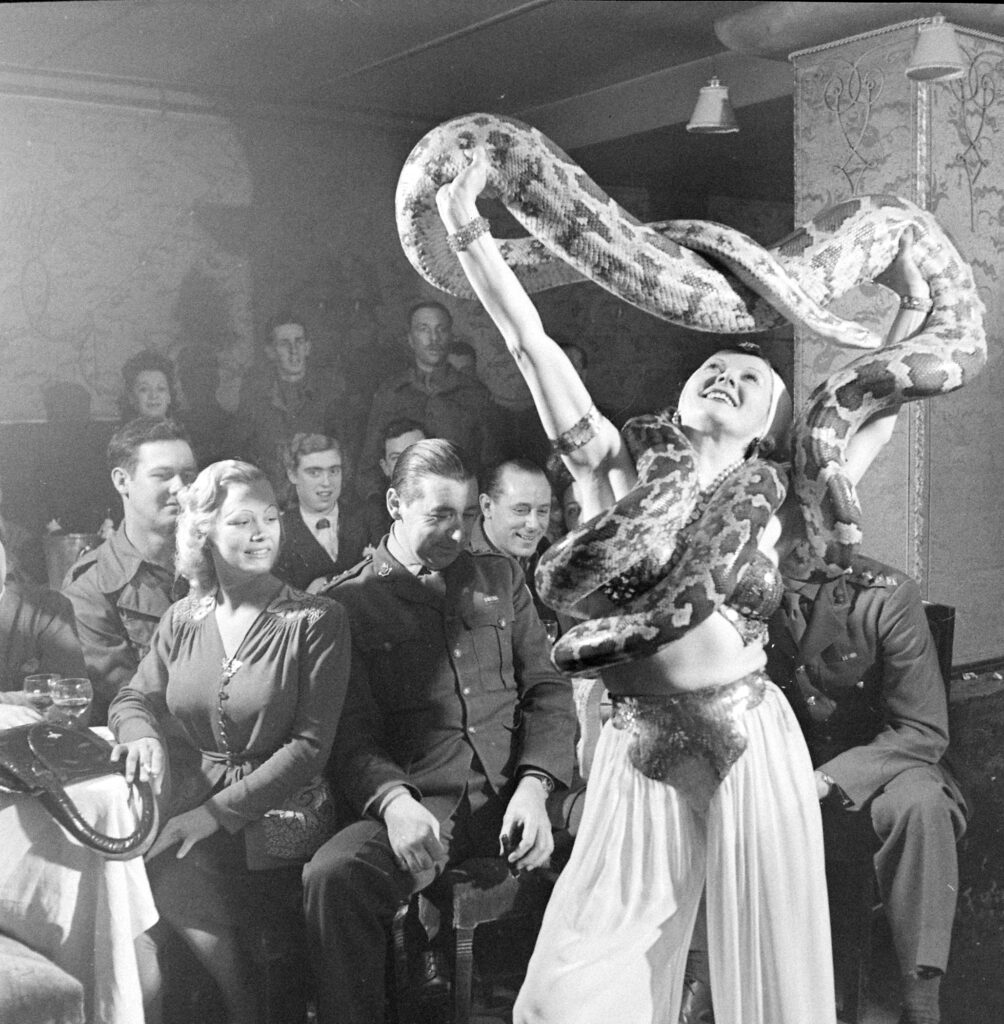In April 1953 about 16 million Americans worked in manufacturing jobs—many more than today, where the number is about 11 million. And roughly a quarter of those workers back then were women.
Enter noted designer Tina Leser, who debuted a fashion line that year for the burgeoning female lunchpail set.
In a story titled “Overhauled Overalls” in its April 13, 1953 issue, LIFE broke down the new look and also the logic behind it:
What to wear to work is not a matter of much choice to the 4.5 million women in U.S. factories. Many work near moving machinery or poisonous dusts and acids, and must wear coveralls, made for safety and comfort but seldom for style. Now designer Tina Leser, who usually concerns herself with how to look elegant at expensive resorts, has taken up the problem of how to look snappy at a workbench. In a group of clothes called Fashion for Industry released in stores this week, Miss Leser presents her solutions. The standard, safe—but usually shapeless—factory coverall appears in practical but neatly fitted and attractive versions…Some designs have pants legs narrowed so that they can be pushed up and hidden under a skirt on the way to work.
The photos for the article, taken by Yale Joel, tell a story not just of a clothing line but of women’s increased prominence in the workforce, with the fashion world looking to address needs beyond the social and domestic realms. Some of the photos were set in the Long Island, N.Y. factory of cosmetics magnate Helena Rubinstein, who is herself a fascinating tale of female entrepreneurship.
The article’s closing line proposed one more feminine touch for the factory: “Miss Leser suggests that instead of the standard tin lunchbox a stylish imported straw basket.”

This Orlon coverall, which retailed for $16.95 with turban, was modeled in the Long Islamd factory of Helena Robenstein’s makeup company, 1953.
Yale Joel/Life Picture Collection/Shutterstock

Tina Leser’s factory fashions, 1953.
Yale Joel/Life Picture Collection/Shutterstock

This outfit, modelled at Fairchild Aircraft, had an elastic belt and a pocket for tools, which LIFE said made it perfect for sailing and gardening as well as the factory, 1953.
Yale Joel/Life Picture Collection/Shutterstock

Tina Leser’s factory fashions, 1953.
Yale Joel/Life Picture Collection/Shutterstock

This model’s factory pants were pushed up under her skirt when it was time to clock out, 1953.
Yale Joel/Life Picture Collection/Shutterstock

These coveralls, examples of Tina Leser’s factory chic line, retailed for $7 to $10, 1953.
Yale Joel/Life Picture Collection/Shutterstock

Tina Leser’s factory fashions, 1953.
Yale Joel/Life Picture Collection/Shutterstock

Tina Leser’s factory fashions, 1953.
Yale Joel/Life Picture Collection/Shutterstock

Tina Leser’s factory fashions, 1953.
Yale Joel/Life Picture Collection/Shutterstock

















